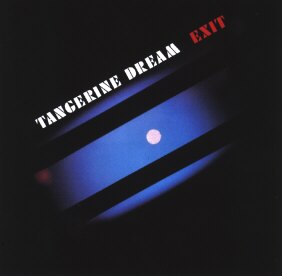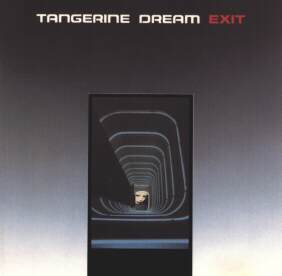 |  | |||||||||||||||||||||
Tangerine Dream Exit- Studio, released September 1981 - | |||||||||||||||||||||||||||||||||||||||||
Covers |
| ||||||||||||||||||||||||||||||||||||||||
Tracks |
| ||||||||||||||||||||||||||||||||||||||||
Details |
| ||||||||||||||||||||||||||||||||||||||||
Notes | The 1981 studio album Exit contained six tracks produced with the then latest equipment, including the Fairlight Computer Instrument. According to Edgar Froese, the band built everything around the MCI mixing console, because they needed to have all the instruments quite near. They did not use acoustic instruments much at all and they did not need an recording engineer. The three musicians just had everything around them, the same way as onstage. | ||||||||||||||||||||||||||||||||||||||||
The opening title Kiew Mission featured a Russian actress reciting words about world peace and communication. In the album's press release Edgar Froese commented: "The words are directed at people in Russia. It's a very spiritual message we hope will ease the situation over here. If you're in Europe right now you would see that all people talk about the Third World War. As musicians we can use our music to say something about the positive side and hope our message gets through." | |||||||||||||||||||||||||||||||||||||||||
Edgar Froese was very engaged in the anti-nuclear cause and had organised that thousands of copies of Exit were shipped and distributed free "to different people in Russia; people in the political power structure, in the arts and just to the ordinary Russian people too." A short time before Exit was released, Tangerine Dream had played a special disarmament concert at the Reichstag building in West Berlin in front of about 100,000 people. | |||||||||||||||||||||||||||||||||||||||||
Exit was released by Virgin Records worldwide, with the exception of the USA where Elektra Records was responsible for release. Elektra chose a different cover layout, using the artwork of the backside of the Virgin releases on its front and a completely different back side. | |||||||||||||||||||||||||||||||||||||||||
Re-Releases | |||||||||||||||||||||||||||||||||||||||||
In 1984 the album was released on CD for the first time as part of a series by Virgin. While the release of Exit featured the original cover artwork, all other releases of this series had a different cover design, using only part of the original artwork in a monochrome border that featured the band and album title. | |||||||||||||||||||||||||||||||||||||||||
In 1989 Arista re-released the album on CD in the USA, again using the alternative artwork of the US vinyl release. | |||||||||||||||||||||||||||||||||||||||||
In 1995 Virgin re-released the album on CD in the so-called "Definitive Edition" series, again featuring the original front cover artwork, but like most of the other releases of this series, it contains some little errors: The composition Pilots Of Purple Twilight is misspelled Pilots Of Purple Twighlight on the CD body, in the booklet and on the CD backside insert, the track Remote Viewing is misspelled Remote on the CD body and on the CD backside insert (in the booklet it appears correctly), several names are misspelled in the booklet (Edgar Froese appears as Frose, Johannes Schmoelling as Schmoeling, and Monique Froese as Frosse), the backside insert features the name of Peter Baumann instead of Johannes Schmoelling, and the studio album is alleged to be a 'Live' CD on the backstrip. | |||||||||||||||||||||||||||||||||||||||||
In 2012 the original album was re-released as part of the compilation box The Virgin Years 1977-1983. | |||||||||||||||||||||||||||||||||||||||||
In 2020 the album was newly remastered by Ben Wiseman from the original tapes and re-released both as part of the Pilots Of Purple Twilight box set and as individual album. | |||||||||||||||||||||||||||||||||||||||||
Releases |
| ||||||||||||||||||||||||||||||||||||||||
Copyright/Disclaimer © 2001-2025 by Michael Berling. Last Update: 2025-01-03 17:20 |


